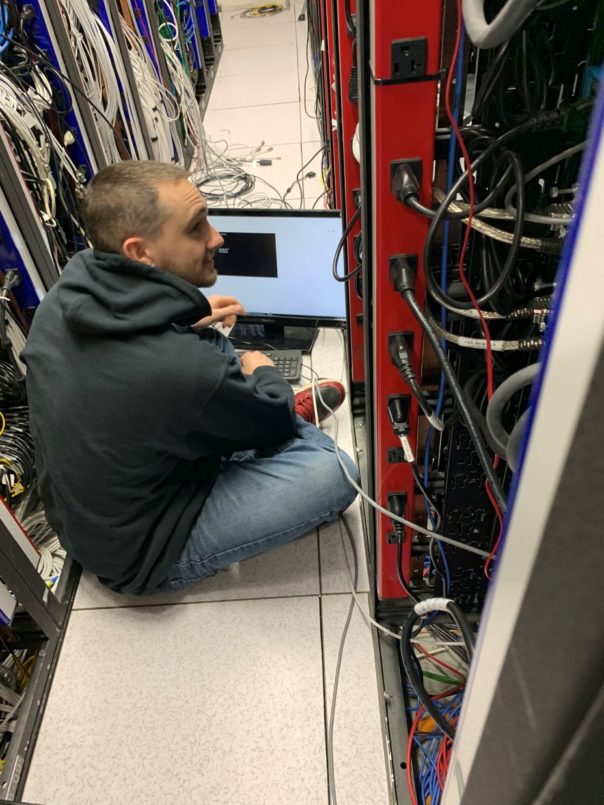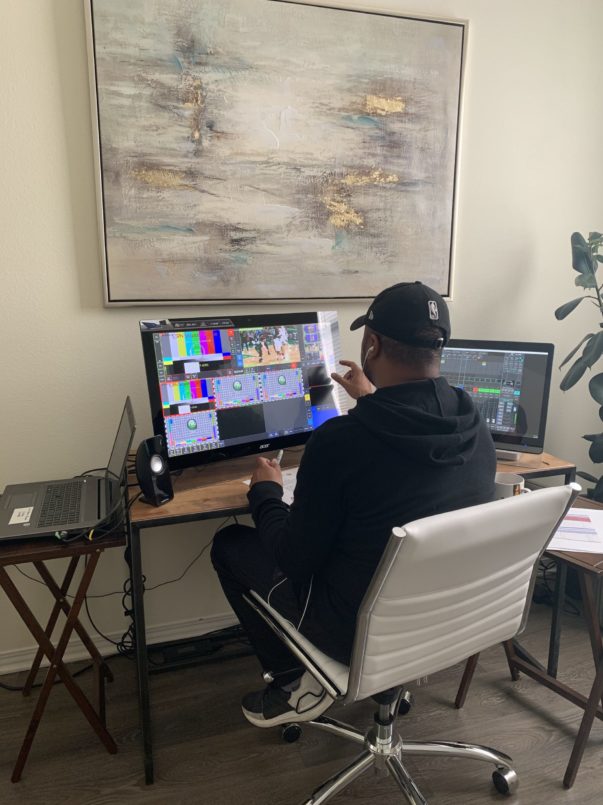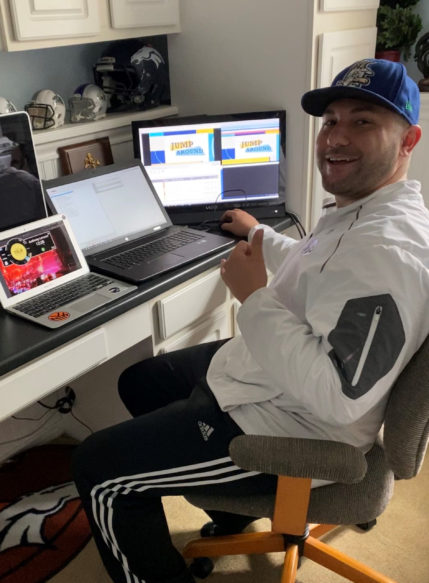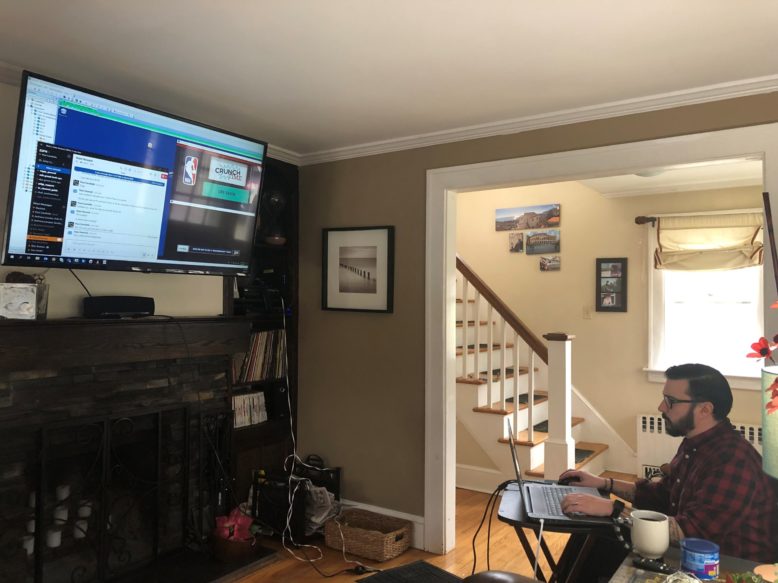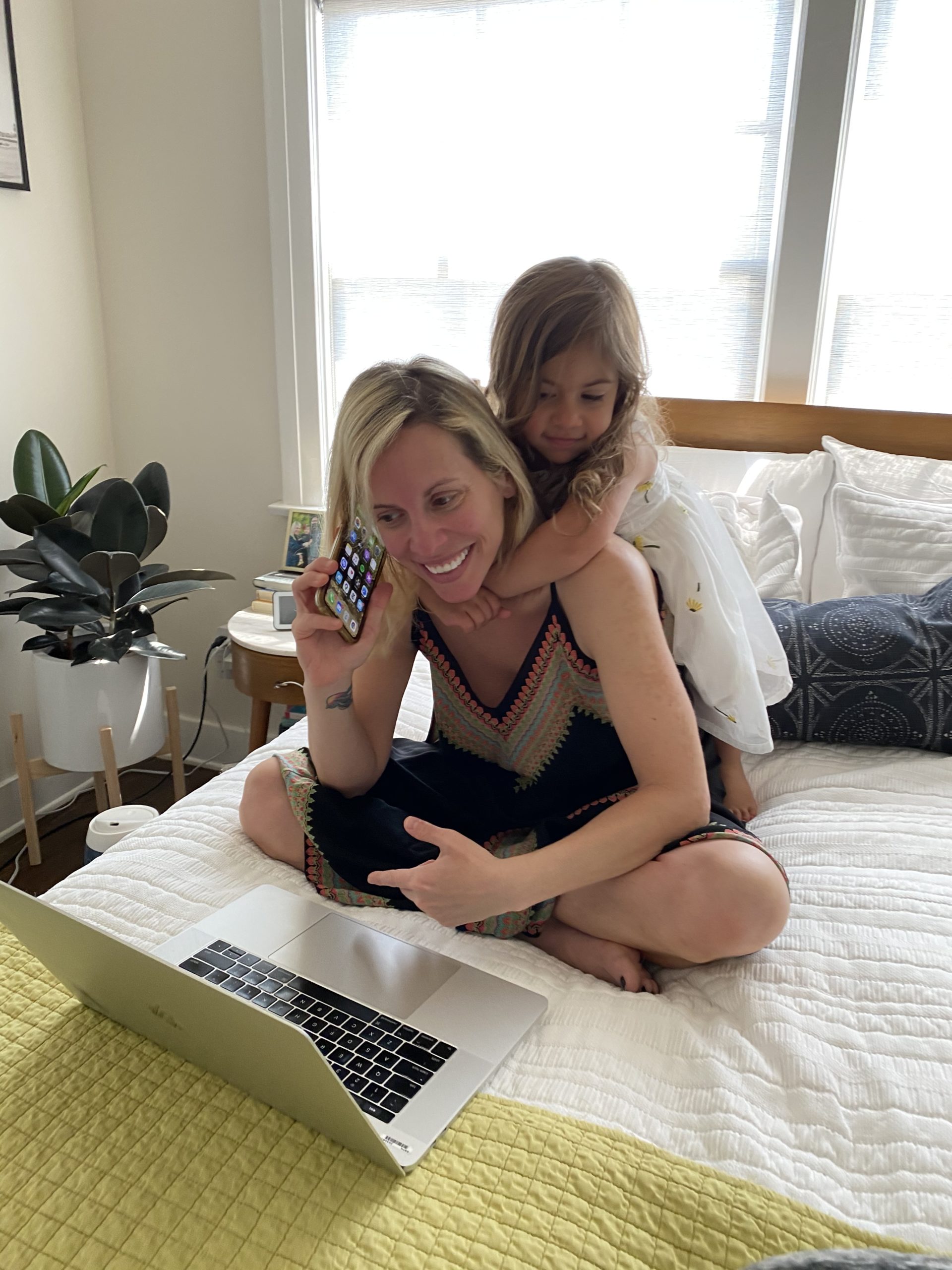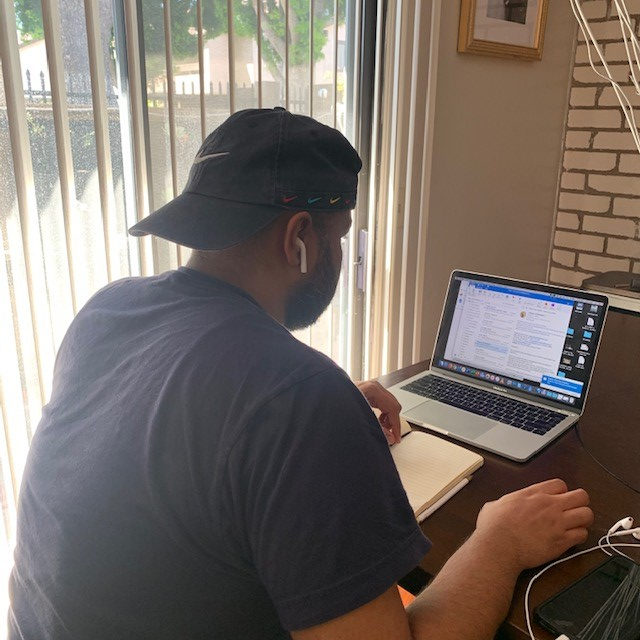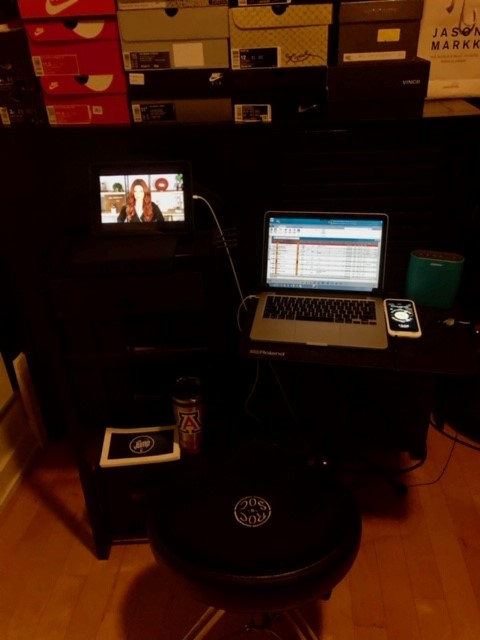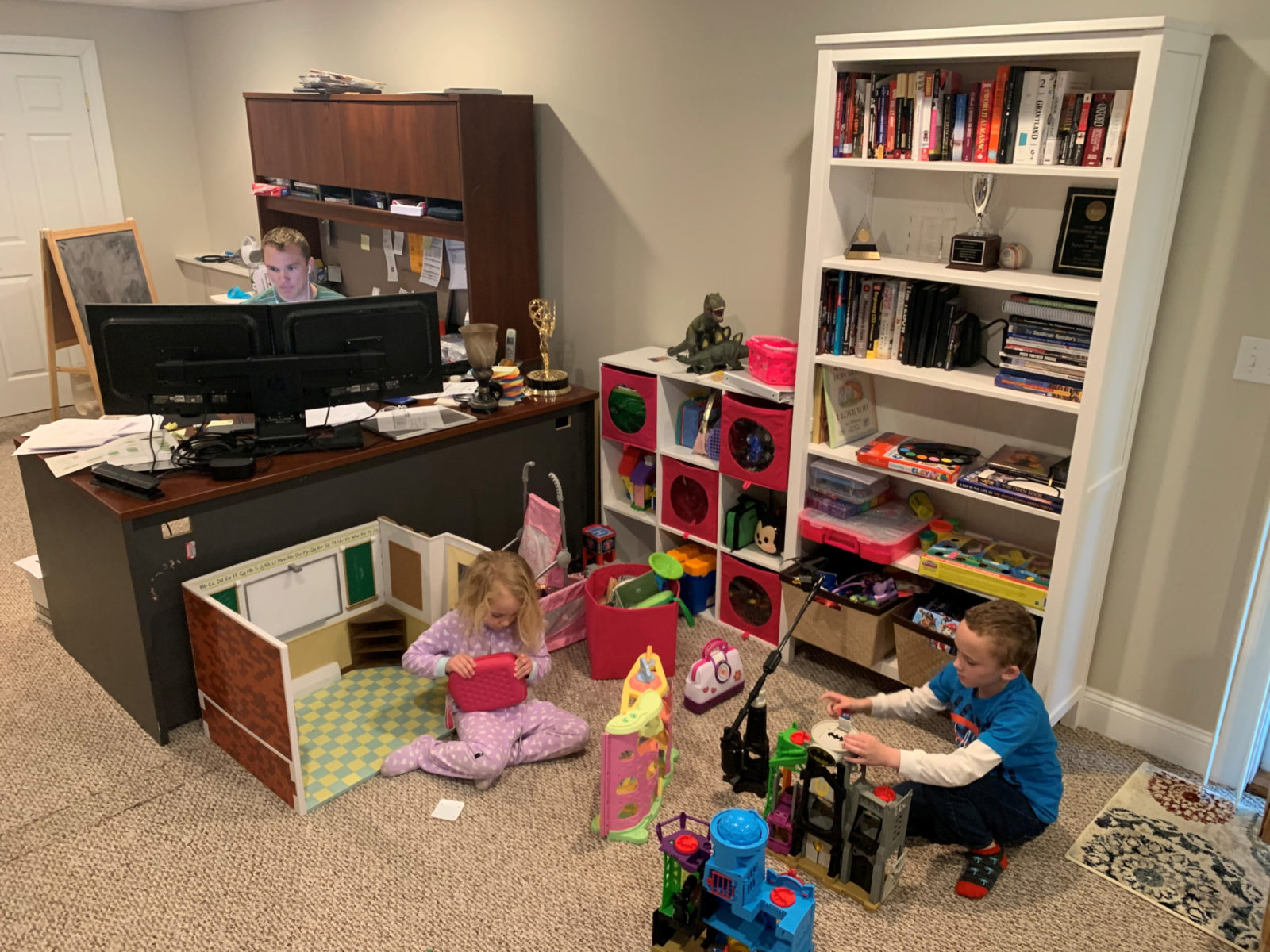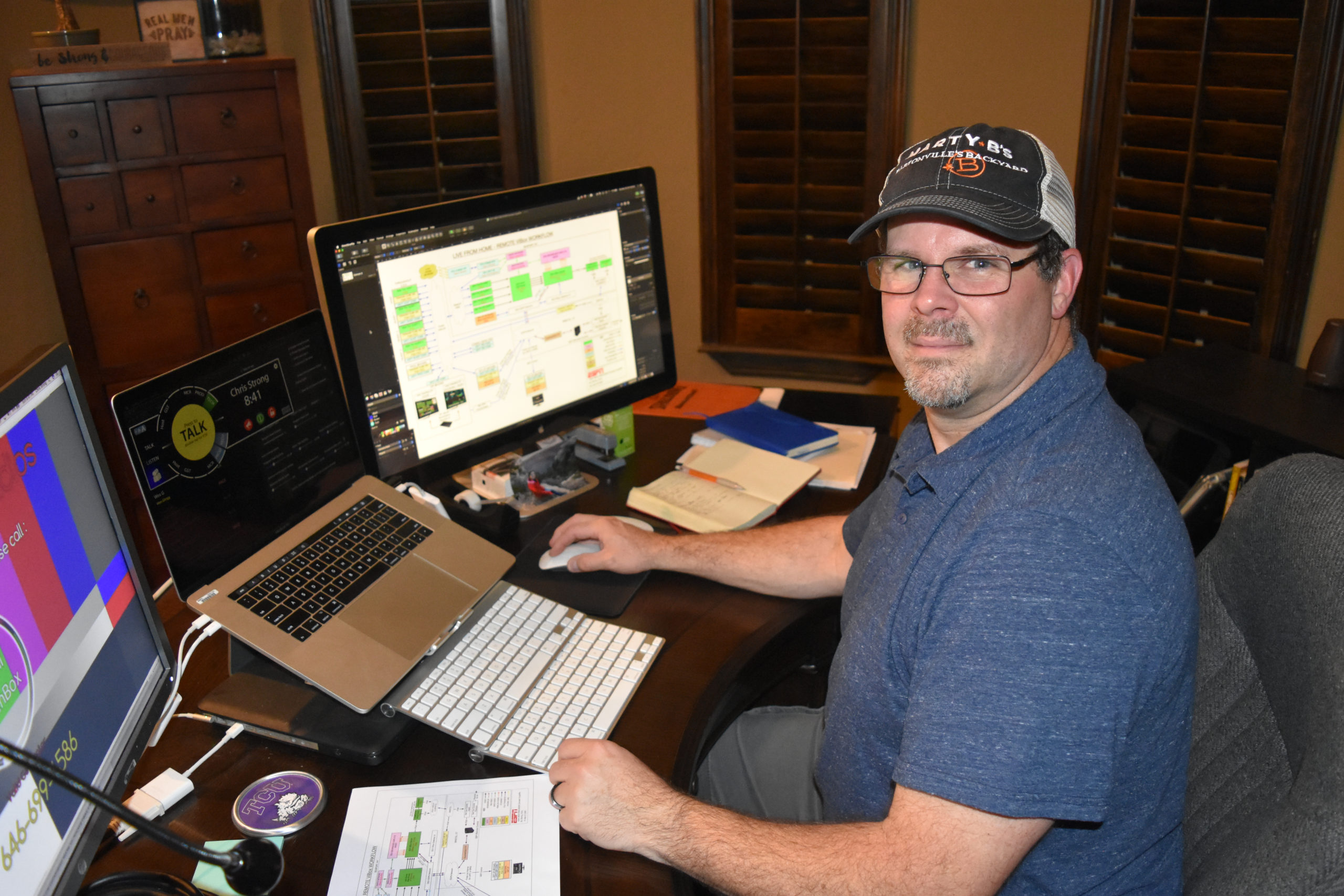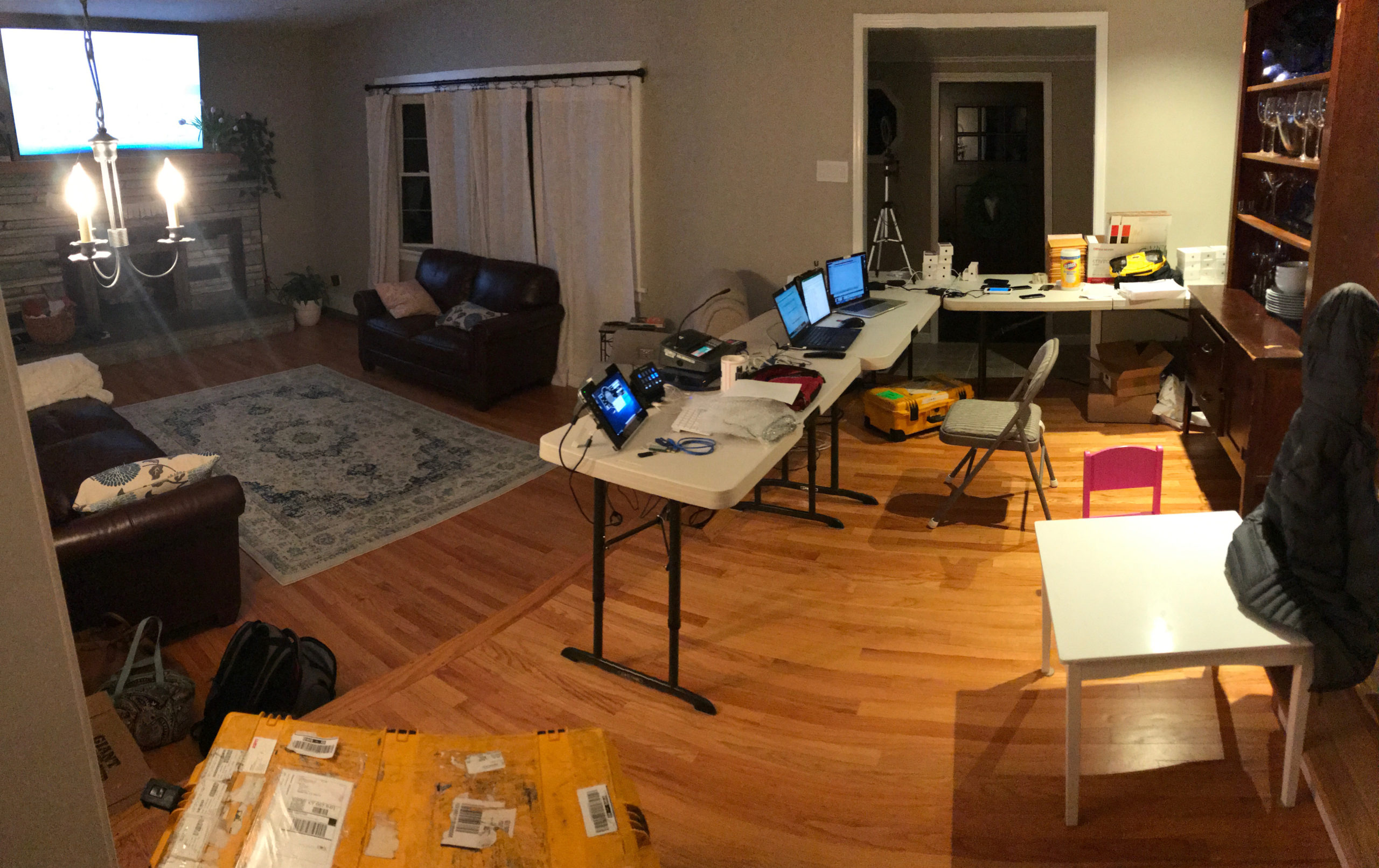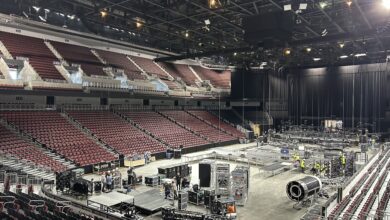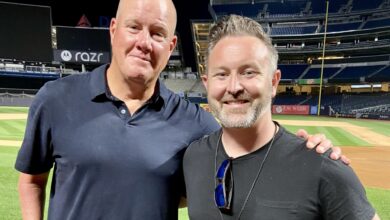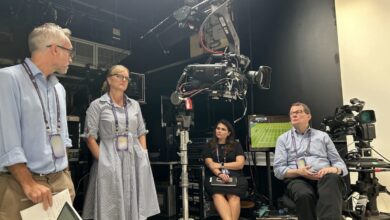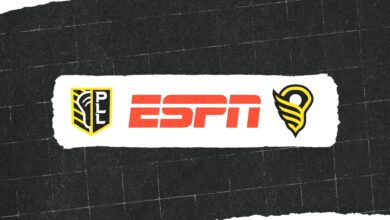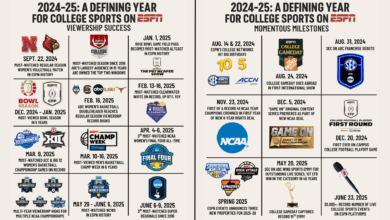EDITOR’S NOTE: The Jump will return to ESPN on Monday, April 13, at 3 p.m. ET. Daily 30-minute shows will be produced with the entire crew working from their homes. The Jump is the first show ESPN is producing with this workflow, and one of the first shows produced entirely from home. In the video above, Remote Operations Manager Ryan Zainc displays the temporary “comms room” he built in his living room to support ESPN’s The Jump: Live From Home initiative. In the copy below, SVP, ESPN & ABC Sports Remote Production Operations, Chris Calcinari, explains how the concept came about and will be executed.
What started as a small, six-person committee within Remote Operations quickly expanded to a team of 30-plus from departments across the company – Creative and Studio Direction, Production, Production Operations, Remote Production Operations and Technology.
The goal of the committee was to review the best option for producing studio shows at a high-level, while allowing all of the associated staff to work from home. The “Live from Home” committee reviewed several cloud-based solutions that work well to execute very basic productions, but did not allow for a large volume of video, graphics or animation. The committee quickly turned to several tools that have been deployed in the field and could be operated from afar.
The initial focus of this new workflow has been to produce The Jump.
The Simplylive ViBox is the core system supporting this new workflow. The ViBox is based at our Seaport Studios in lower Manhattan, but controlled from a staffer’s home in Los Angeles. The ViBox touchscreen production system provides us with the ability to cut/dissolve/wipe between cameras, video and animation sources. It also allows us to store and playback video and insert graphics.
Simplylive developed a new product to reduce the needed bandwidth, which makes the Live From Home initiative possible. Developers in the U.S. and Hong Kong have worked around the clock for the last week to perfect this new product for ESPN’s use.
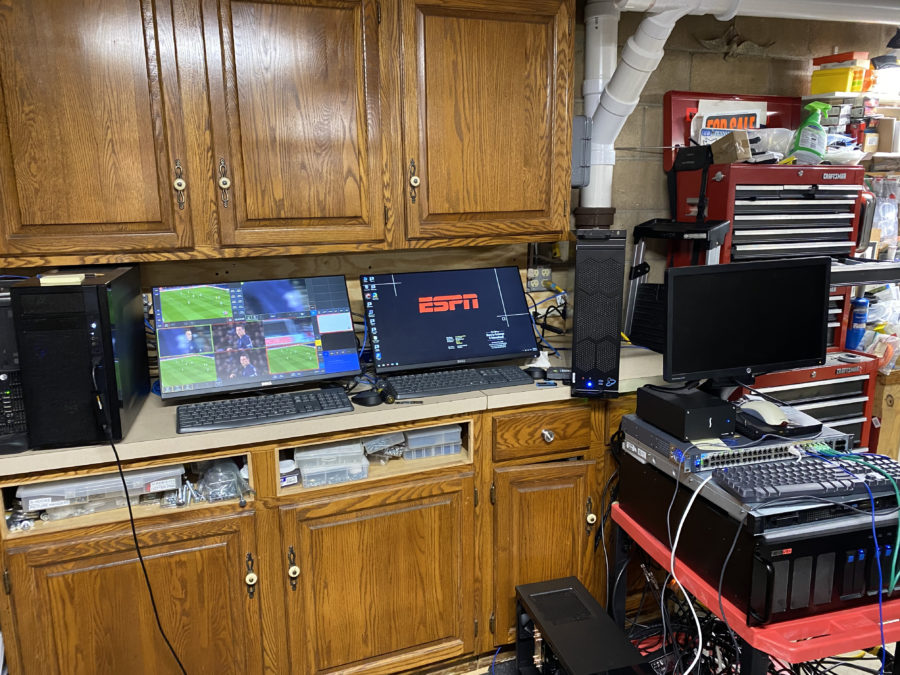
Remote home studios have been built out for talent who work on The Jump. The audio/video signals from each home are sent over the internet (using the TVU application) to the Seaport Studios for integration into the ViBox.

A VIZrt graphics device is also based at our Seaport Studios and is controlled from Operators’ homes in Middlebury and Southington, Conn.
All communications take place using an app called Unity Intercom. This app is installed on the phones, tablets, or computers of everyone involved, including talent. It functions in a manner similar to the intercom systems based in our various studios using home Wi-Fi or cellular data.
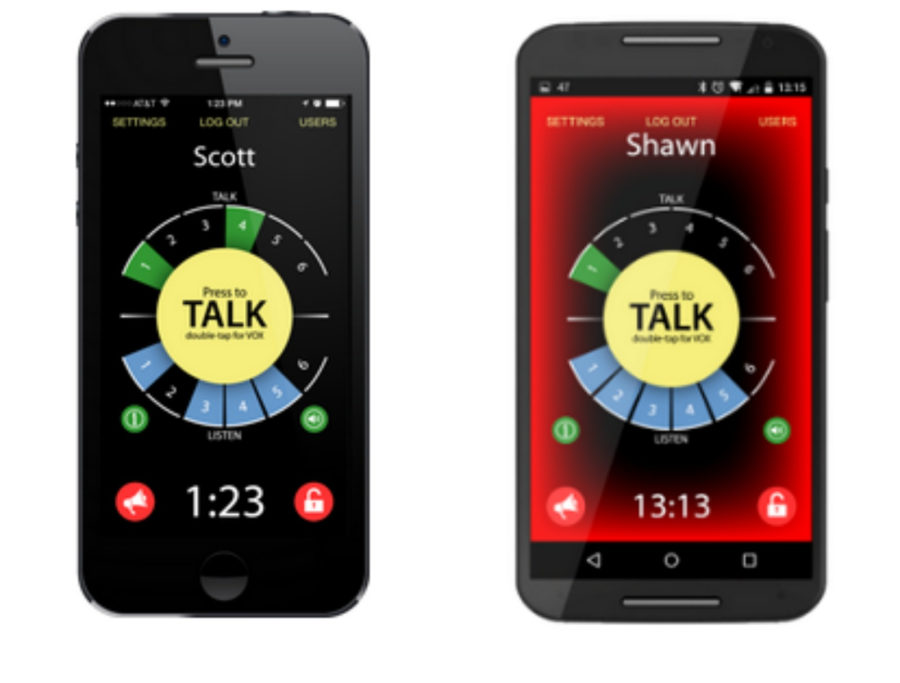
Production staff is able to pull video from ESPN media servers and edit at home. Clips are then quality controlled and color-corrected by editors. Production personnel then send completed video elements to ViBox. Signiant file transfer workflows automatically move the clips from Quantel to the ViBox. Editors add a specific string of text to the file name, which triggers the automatic transfer.
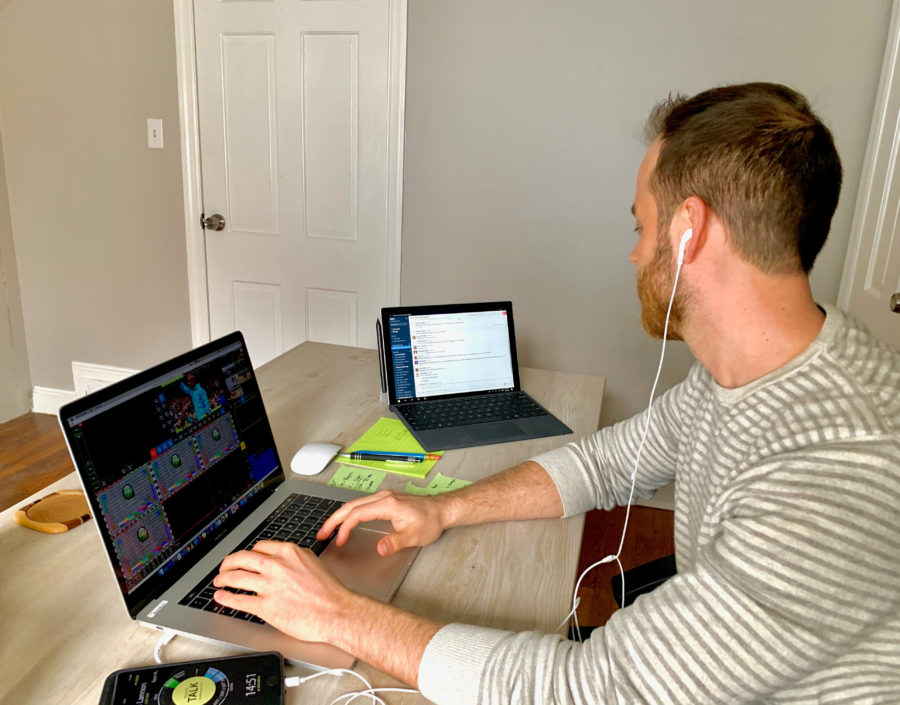
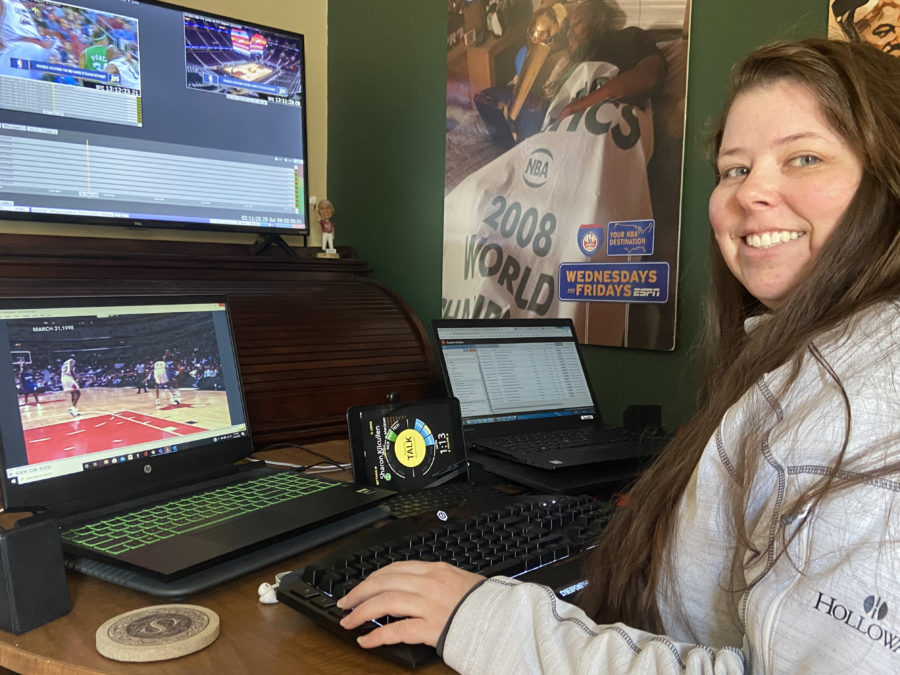
Producer Danny Corrales and coordinating producer Hilary Guy are working from home as well. They determine the daily rundown and manage the production team and talent preparing for the show. Guy, Corrales, and the rest of the team view the show with minimal delay using a live video stream. Production personnel rely on Unity Intercom for real-time communication with talent and each other.
See these ESPN colleagues working on this project in the photo gallery below.
